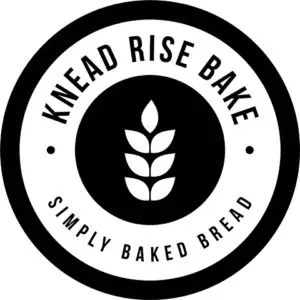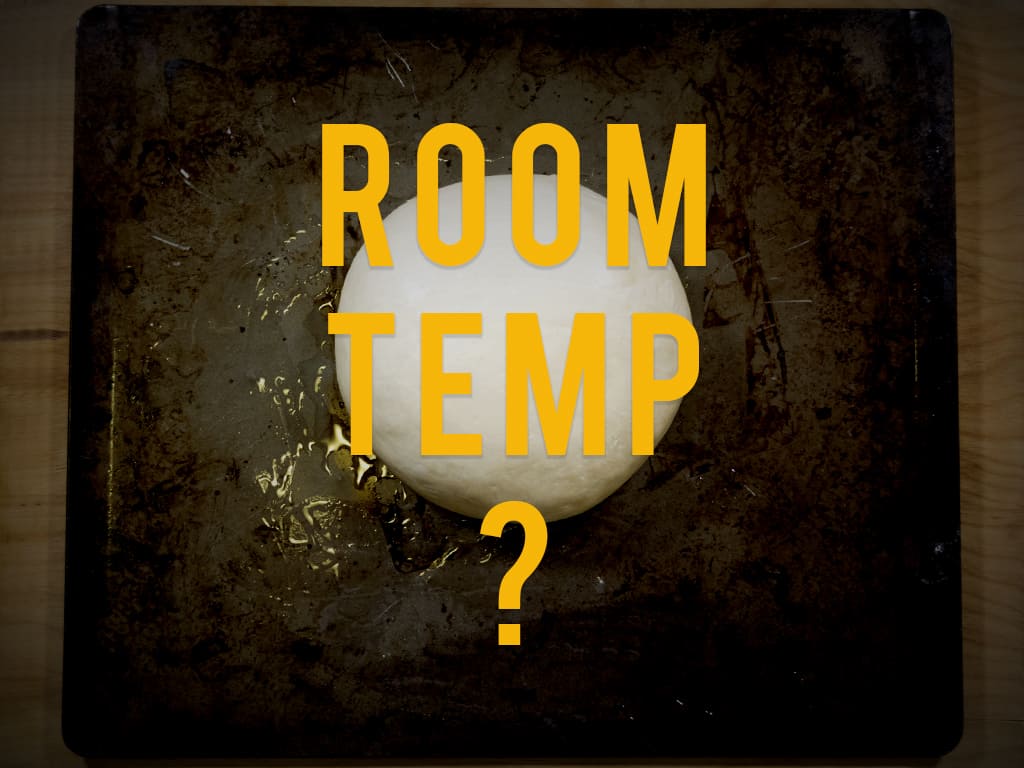If you’ve ever looked at a bread recipe you’ve likely seen some annoyingly vague terms like, “leave to rise in a warm place.” Or maybe you’ve even seen this beauty, “proof at room temp.” Excuse me? Did I really just need to measure my water temperature to the nearest degree if you’re just going to tell me to leave this precisely balanced lump of ingredients at room temp? I’m no meteorologist but I’m pretty sure room temperatures vary greatly across the planet. I can’t be the only one annoyed by this, right?
Well, as it turns out, there really is more wiggle room once you make it to this stage of the recipe; and these terms are actually less vague and more scientific than one might think.
When recipes call for proofing at room temperature it is referring to a temperature range around 68° to 77° F. Many recipes target the average of those temperatures at 72-73° F, which happens to be the optimal range for developing flavor and structure with a relatively short proofing time.
If you’re interested in knowing more about the wiggle room and reasoning behind using differing temperatures for proofing or why there is a range instead of an exact temperature, then we salute you our fellow bread nerd! Let’s dive in.
Why Recipes Call for Room Temperature Proofing
Why do recipes call for room temperature proofing? Well, for a host of reasons really. But it primarily has to do with how recipes are intended to be used. When a professional baker makes a recipe and throws it in a book or posts it online, they are likely adapting their recipe a bit for the atmosphere and tools a home baker is working in and with.
It is highly likely that a professional baker has exact temperatures for proofing each of their varieties of bread. But since home bakers don’t have the proper equipment to hit their professionally controlled numbers, they give us the next best thing: room temperature.
It really is the next best thing, because when it comes to proofing dough there is no real loss of quality and taste when relying on room temperatures for home bakers. In fact, the primary advantage gained via controlling proofing temperatures is consistency. A bakery wants their signature bread to take the same amount of time to prepare each day and to taste, smell, feel, and look the same in the middle of summer as it does in the dead of winter. Controlling every condition is how that is done. But for us everyday home bakers, that consistency is not needed.
As long as we stay in the room temperature range, we get the optimal temperatures needed for bread to do its thing with great flavor notes in a reasonable time frame.
If temperatures go under 68° F then things progress very slowly. But that isn’t a bad thing, as structure and flavor are improved over time. But, yeast really slows down around that set point, and it could be hours longer than the recipe calls for. Which is fine, but you’ll need to develop an understanding of what properly proofed dough looks like instead of going off of the timeline on a recipe.
Like the cooler temps, warmer temperatures will alter time as well. Temperatures around 77° F and above will proof dough significantly faster than 68° F and under. This is good for your schedule, but sadly not for bread. Structure and flavor take time. Unless adding binding ingredients and flavor enhancers like egg, dairy, oil, and/or sugar faster dough isn’t the way to go.
Room temperature is the sweet spot for great bread, and the wiggle room between 68-77° F will alter your bread very little other than the amount of time it takes to proof.
Why Recipes Call for Warm Proofing
If room temperature is optimal, you might be wondering why recipes often call for warm proofing. In our experience, when we see recipes that instruct us to proof at warm temperatures it usually falls into one of three categories: it is an enriched dough recipe, it is a one-hour recipe, or the recipe only calls for warm temperatures during one of the rise phases. Let’s look at each one and the reasoning for each separately. But first, let’s set the stage for the purpose of each.
Most basic loaves or rolls typically take in the ballpark of 2.5 to 4 hours to complete. Those 2.5 to 4 hours are primarily dependent upon the speed at which the dough rises during proofing stages. The speed at which the dough rises is dependent upon how active the yeast is. Yeast’s activity is determined by the amount used in ratio to other ingredients and the temperature of the environment it is in. In other words, the temperature of a room combined with the amount of yeast used changes how fast or slow yeast will produce a rise. Put even simpler, warmer yeast and more of it equals faster rise times.
However, this process is a balancing act. This is true because getting our yeast too warm and/or using too much will produce undesirable flavor profiles. Additionally, our dough might not have enough time to develop structure before it over proofs. You could even kill your yeast off if you start to go over 120° Fahrenheit.
Okay, foundation set. Let’s go!
Enriched Dough Recipes
As alluded to above, in a typical loaf of bread good structure and flavor takes time to form. Which is why lower temperatures are optimal. But when working with enriched dough, the additional ingredients improve flavor and structure in our dough. We can think of it as a head start in the development of both flavor and structure, which means we don’t need to take as much time with the rising stages. Since we don’t need the longer times and we aren’t as worried about flavor development we have the luxury of speeding things up with the use of warmer rises.
One Hour Recipes
This one might be a bit obvious, but one-hour recipes are such a staple on recipe sites and youtube videos that we thought we’d mention the reasoning here.
When your main goal is bread on the table in an hour, unless it is flatbread or drop-biscuits, you have to crank up the heat and increase the amount of yeast used to pull it off. Like we mentioned above, this will almost certainly impact flavor and structure in negative ways. Which I think is why I’ve never seen a one-hour recipe that isn’t enriched in some way. The ingredient I see used the most is sugar. This makes sense for a couple of reasons, as it aids with the flavor problem but also helps to enhance the activity of yeast. I’ll add a disclaimer here. I’m not saying all 1-hour bread recipes are enriched, but the few dozen I’ve seen are.
Warm Proofing for Only One Rise Recipes
This is a fairly common practice in baking. Depending on the recipe and leavening agent used, we might want to warm proof during the first rise only, or the second rise only. Usually, it has to do with the type of leaven used. The two most common being commercial yeast and sourdough starter. To use a sports analogy here, commercial yeast is like a sprinter while a sourdough starter is like a marathon runner. One starts with a punch but doesn’t last very long, while the other takes a while to hit a groove but can keep that groove for a long extended time.
At the end of the day, structure and flavor take time. So in recipes that are not enriched, we need at least one of the rise phases to be slow. With commercial yeast recipes, we most often see a cool or room temp first rise with a warm second rise. This has to do with balancing the activity of the yeast. Bakers attempt to keep it under control in the beginning so it doesn’t go too fast, and then speed it up as it begins to run out of energy at the end. But, with sourdough starter recipes, we tend to see a warm first rise with a LONG (often overnight) cool second rise. Again, it is a balancing act. Bakers want to speed things up to force the starter into a groove and then slow things down to keep it in that groove.
But, I have to admit we rarely do a warm proof when working with yeasted recipes that aren’t enriched unless time simply is an issue, like in holiday baking. We just like the flavor and structure of longer proofed bread. In fact, we like to have a rhythm of having dough retarded in the fridge that we can have ready to go. We haven’t perfected the timing yet, but we’re working on it. Posts will be coming.
What if You Live in an Extreme Climate?
If you find that your average room temperature tends to be above or below the ranges given, you have no need to worry. As we shared above, the range is simply where speed, structure, and flavor meet together in harmony. Generally speaking, you can expect recipes to take longer if your room is on the cold side, and alternatively, they should take less time if your room is on the warm side. Just plan your time accordingly for your environment.
That being said, you can always run your oven for a few minutes to let it warm up, and proof your dough in your oven if you live in a colder climate. Just take care not to let your temperature get up above that 120 mark we mentioned above.
Conversely, if you live in a warm place, the fridge will be your friend. Learn to experiment with controlling your rise times with a combination of fridge and room proofing. In fact, fridge proofing is quite common. It will do no harm and likely improve your final loaf. Plenty of professionals will tell you cool temperatures are the best for flavor. Not time though, so experiment. Remember it’s a wiggle room kind of process.
Maybe that is what recipes should say, “let rise at wiggle-room temperature.”

